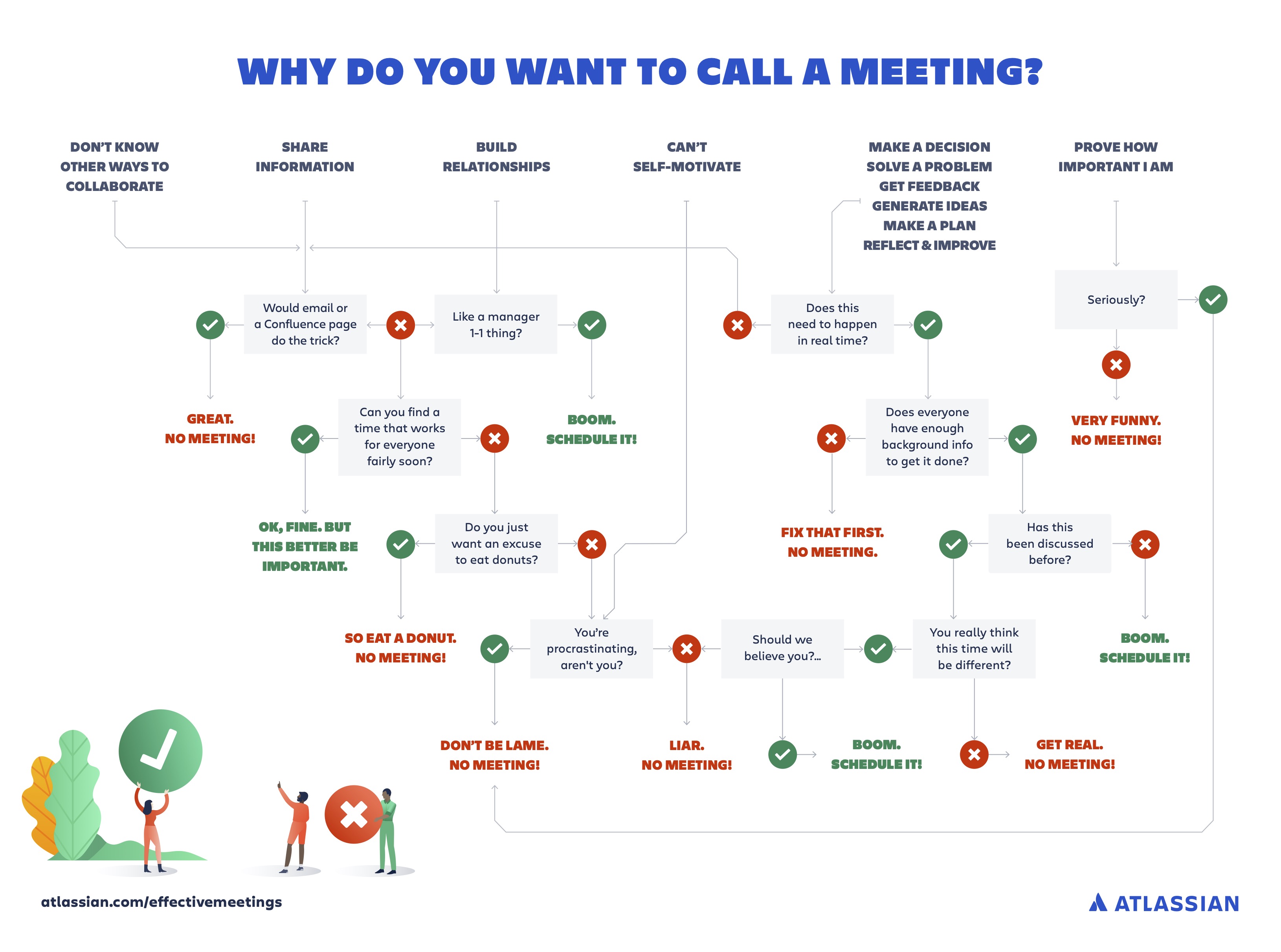Meeting Principles
Real-time sometimes, asynchronous most of the time.
Meetings are the last resort, not the first option. At GV we have a documentation-first culture. That being said, meetings still play an important role in the way we work and there are certainly times when meetings are important for collaboration, culture, and decision-making. However, there is a BIG difference between a well-run meeting and a waste-of-time meeting, which is why we wrote this guideline.
TL;DR: Write a clear agenda and invite as few people as possible.
Note: this guide is for scheduled group meetings only. We believe there is huge value in 1:1’s between managers & employees, which should instead follow 1:1 Framework.
Scheduling the meeting
Organizer: Write a clear goal & agenda and invite as few people as possible.
When you are the meeting organizer, you bear a lot of responsibility. You are imposing on the people you invited to take up their limited time in the week, so it is your responsibility to prepare for the meeting, set it up for success, and give enough information so that your invitees can decide whether or not to join.
Establish the goal of the meeting and list the discussion topics (agenda).
Attach the documentation to the invite.
Invite 4 people max.
Schedule meetings for 15 minutes less than you think.
Attendee: Decide if you join.
GlobalVisionaries own their own time and calendars. Just because someone slotted something in your calendar does not mean it is a good use of your time. DECLINE the meeting and send this confluence article when,
You don’t know the goal or agenda.
There are over 4 people.
Based on the topic, you do not think you are a
contributor
Attending the meeting
Organizer: Start on time, end on time.
Start no later than 1 minute late, unless you are socializing.
Hit Record ⏺ - it’s free leverage!
When the timer is up OR you achieved the meeting goal, end the meeting.
Attendee: Be present, or leave.
Show up on time & be present.
If you are no longer needed in the meeting, leave! Tip: write in the chat instead of announcing your exit.
After the meeting
Organizer: Share the notes and recording.
Send the action items and assign one owner to each (slack group, or confluence page).
Send the recording to all of the people who you didn’t invite on purpose but would have if you worked for a normal company, and all the people who declined so they can instead watch at 1.5x at their convenience 😉
Resources
If you want to learn more about running effective meetings, check out our inspiration:
https://www.atlassian.com/blog/teamwork/how-to-run-effective-meetings
Elon Musk’s email to Tesla employees:

